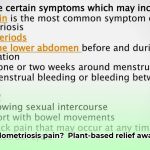Want to eat healthier, save money, and enjoy unbelievably delicious meals? Plant-based soups are the answer! This guide shows you how easy it is to make amazing vegan soups, whether you’re a cooking pro or just starting out. We’ll cover everything from basic techniques to awesome recipes, plus tips and tricks for making the most of your ingredients. Get ready to discover a whole world of flavorful, healthy, and budget-friendly soups that will become your new favorite weeknight meals. For a longer-term commitment, check out this 30-day plant-based meal plan.
Plant-Based Diet Soups: A Delicious and Healthy Journey
Let’s dive into the wonderful world of plant-based soups! They’re not only incredibly tasty and satisfying but also a fantastic way to boost your health and save money. This guide will equip you with the know-how to create delicious, nutritious, and budget-friendly plant-based soups, perfect for any time of year. Studies show that plant-based diets can significantly reduce the risk of chronic diseases like heart disease and type 2 diabetes.
Essential Techniques: Unlocking Soup Success
Before we jump into specific recipes, let’s cover some basic but vital techniques that’ll elevate your soup game.
- Sautéing: Think of sautéing as a flavor enhancer. Gently cooking your vegetables in a little oil (or even just water for oil-free options) brings out their natural sweetness and aroma. You’ll notice a huge difference! For optimal browning, ensure your pan is properly preheated before adding ingredients.
- Simmering: Simmering is where the magic happens. It’s the slow, gentle cooking that allows all those amazing flavors to meld together beautifully, creating a harmonious and complex taste profile. It’s like a flavorful symphony! Keep the heat low to prevent the soup from boiling, which can toughen some vegetables and affect the overall texture.
- Blending: Want a luxuriously smooth soup? A blender is your best friend. It transforms chunky vegetables into a creamy dream. Just remember to blend in batches to avoid overflowing your blender. Start with the blender on low and gradually increase the speed for the best results.
Top 10 Budget-Friendly and Healthy Plant-Based Soup Recipes
These recipes are designed to be both delicious and easy on your wallet, proving that healthy eating doesn’t have to be expensive. Each one is packed with flavor and nutrients.
- Lentil Soup: This hearty soup is a protein powerhouse. Lentils are incredibly affordable and provide a good amount of protein and fiber, keeping you full and satisfied. It’s comfort food at its finest, especially on a cold night. Try adding a bay leaf or a splash of vinegar for extra depth of flavor.
- Black Bean Soup: Transport your taste buds to the Southwest with this flavorful classic. Black beans are inexpensive and versatile. Feel free to experiment with different spices – chipotle peppers for smoky heat or a squeeze of lime for a zesty kick. Topping with avocado and cilantro adds freshness and healthy fats.
- Curried Vegetable Soup: A vibrant explosion of color and flavor, this soup is a testament to the power of spices. Fresh or frozen vegetables work perfectly, making this a flexible option depending on what’s in season or readily available. A dollop of coconut yogurt adds creaminess and a cooling effect to balance the spices.
- Creamy Tomato Soup (Dairy-Free): Enjoy the rich, comforting taste of tomato soup without the dairy! Coconut milk, or even blended cashews, adds incredible creaminess – the secret to a velvety texture. Roasting the tomatoes before blending enhances their sweetness and adds a deeper flavor.
- Roasted Red Pepper and Carrot Soup: Roasting the vegetables takes this soup to the next level. The roasting process intensifies the sweetness and creates a smoky depth of flavor you won’t find anywhere else. Adding a touch of smoked paprika complements the roasted flavors beautifully.
- Miso Soup: This Japanese classic is incredibly simple and quick to make, yet bursting with umami flavor. It’s a perfect light meal or a comforting starter. Experiment with different types of seaweed (wakame, nori) and tofu for variations.
- Minestrone Soup: A hearty Italian staple, Minestrone is a vibrant mix of fresh vegetables and beans. It’s visually appealing and incredibly satisfying – a complete meal in a bowl. Add a swirl of pesto or a sprinkle of vegan parmesan for extra flavor.
- Spicy Peanut Soup: Inspired by West African cuisine, this creamy soup has a delightful kick. It’s a flavorful adventure for your palate. Adjust the amount of chili or cayenne pepper to control the spice level.
- Butternut Squash Soup: The quintessential autumn soup, butternut squash soup is naturally sweet and savory. The warm spices and a touch of maple syrup create an irresistible combination of flavors. Topping with toasted pumpkin seeds adds a delightful crunch.
- Broccoli Cheddar Soup (Dairy-Free): This is a classic comfort food, reimagined! You’ll be surprised how creamy and cheesy it is without any actual dairy. Nutritional yeast is the secret ingredient that makes it taste like the real deal. Adding a squeeze of lemon juice brightens the flavors and balances the richness.
Ingredient Spotlight: Nature’s Nutritional Powerhouses
Let’s talk about the stars of the show: the ingredients!
- Legumes (Lentils, Chickpeas, Beans): These are protein powerhouses and incredibly affordable. They’re also packed with fiber, which keeps you feeling full and satisfied. Soaking dried legumes before cooking reduces cooking time and improves digestibility.
- Vegetables: A rainbow of colors means a rainbow of nutrients! They’re low in calories, rich in vitamins and minerals, and provide essential fiber for healthy digestion. Opt for seasonal vegetables for the best flavor and nutritional value.
- Spices: Beyond flavor, many spices offer health benefits. Turmeric has anti-inflammatory properties, ginger aids digestion, and cumin is an excellent source of iron. Experiment with different spice combinations to create unique flavor profiles.
Cooking Methods: Find Your Perfect Match
You have options! Choose the method that best suits your kitchen and schedule:
- Stovetop: Simple, offers maximum control over the cooking process. Regular stirring prevents sticking and ensures even cooking.
- Instant Pot: A game-changer for speed and convenience. Perfect for busy weeknights. Be sure to follow the manufacturer’s instructions carefully for safe operation.
- Slow Cooker: Ideal for deeply flavorful soups that require minimal attention. Just throw everything in and let it simmer all day. Avoid overfilling the slow cooker for optimal cooking.
Troubleshooting: Addressing Common Soup Challenges
Even experienced cooks encounter a hiccup now and then. Here are some solutions to common problems:
| Problem | Solution |
|---|---|
| Soup too thick | Add broth, water, or even some plant-based milk. |
| Soup too thin | Simmer uncovered to reduce excess liquid. A cornstarch slurry (1 tbsp cornstarch mixed with 2 tbsp cold water) can also thicken soup quickly. |
| Blending issues | Blend in smaller batches. Ensure the blender lid is secure. |
| Flavor needs a boost | Add a squeeze of lemon juice, soy sauce (or tamari), or your favorite herbs and spices. Taste frequently and adjust seasonings as needed. |
Adapting to Dietary Needs: Soup for Everyone
Most plant-based soups are easily adaptable to various dietary needs. For gluten-free options, simply use gluten-free broth and avoid any ingredients containing gluten. To make oil-free soups, sauté vegetables in water or broth instead of oil. Get creative and adapt these recipes to fit your unique dietary preferences and restrictions. Don’t be afraid to experiment! Consider using tamari instead of soy sauce for a gluten-free alternative.
The Final Word: Embrace the Deliciousness
Making plant-based soups is a rewarding experience. You’ll discover a world of flavors, textures, and nutritional benefits while saving money along the way. So grab your favorite vegetables, spices, and get cooking. Experiment, have fun, and enjoy the delicious journey! Remember to store leftover soup properly in the refrigerator for up to 3-4 days or in the freezer for longer storage.
How to Make Creamy Plant-Based Soup Without Coconut Milk
Key Takeaways:
- Achieving creamy vegan soups is easy without coconut milk. Many ingredients create a luxurious texture.
- Potatoes, lentils, and cashews are excellent alternatives. Each provides unique flavor and texture.
- Blending is key for a smooth, creamy consistency. A high-speed blender is ideal, but an immersion blender works too.
Mastering the Creamy Texture: Techniques and Tricks
Want to know how to make creamy plant-based soup without coconut milk? It’s simpler than you think! Forget relying on coconut milk for creaminess. Several ingredients create rich, velvety soups without the coconut flavor. Top chefs have noted a marked preference for cashew cream in creating smooth textures.
Let’s explore the key techniques:
- The Power of Starch: Potatoes and other root vegetables (like sweet potatoes or parsnips) are your best friends. Their natural starch thickens the soup as it simmers. Simply roast or boil them until tender before adding them to your soup base. Roasting intensifies their sweetness for an even richer flavor.
- Legume Love: Lentils and chickpeas aren’t just for salads. They’re
- Plant-based Diet Colitis Remission: Success Stories - December 18, 2025
- Plant Based Diet Breast Cancer: Research-Based Benefits - December 16, 2025
- Plant-Based Diet Ulcerative Colitis Remission: Proven Benefits - December 15, 2025










